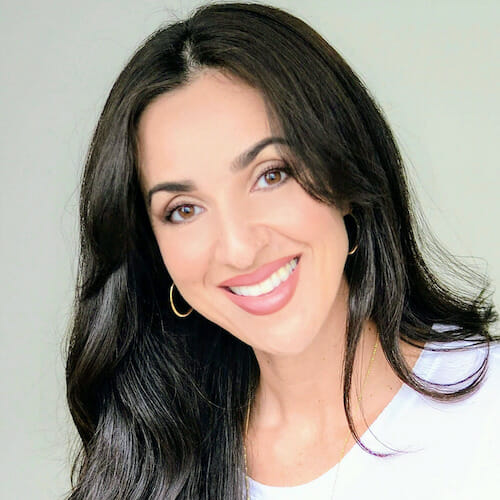

He was 95 years old. I still thought he was invincible and that I had time.
I thought I had time to sit across a table from him and share stories. Time to hear him truly speak about yesteryear and what it was like to live nearly a century ago in rural Nebraska, breaking horses and working on the family farm. I knew he was a proud countryman; he already had told me about his time during the war, but I yearned to dive deeper.
We had only ever skimmed the surface. We never had really captured his narrative the way I wanted to know it.
Yet here we were, boarding an airplane to meet him at his final resting place instead. I didn’t have the grace of time that I had taken for advantage. He wasn’t invincible after all.
Time is free, but it is priceless
By definition, an oral history is the collection and study of historical information about individuals, families, important events or everyday life using audiotapes, videotapes or transcriptions of planned interviews.
The “Silent Generation,” those born from 1925 to 1945, like my grandfather, have experienced a life that we’ll never know or truly understand. They have witnessed societal growth and transformation that we take for granted today in a way that is utterly mind-boggling.
The ladies and gentlemen of this generation, who average 87 years old, are children of an era who were expected to be seen and not heard. Just by existing, though, they carry a collective understanding of our world and are a treasure trove of knowledge that even the greatest of history books never could put into words.
As they leave us daily, they take with them their unique stories and perspectives. In this scenario, time is of the essence.
The benefits of gathering oral history
As senior living professionals, we are surrounded by a valuable collection of history and knowledge every day. To gather the oral history of our residents is an opportunity to accumulate a deeper understanding of the individuals we are serving and caring for within our respective communities. It’s also an opportunity to capture our residents’ stories in a safe environment, so those stories then may be treasured by the family members for years to come.
Each oral history project is different, and the value of certain benefits may be different for your community, but if you are thinking about introducing an oral history project under your roof, consider some of the potential benefits of doing so:
- Cohesive family relationships
Sharing family stories, even the less flattering ones, can make for more cohesive family units because there is an increased understanding, respect and empathy for past decisions.
- Deeper connections and empathy
Sharing oral history can provide a platform for grandparents to connect with their grandchildren, and for residents to connect with their caregivers.
- Greater well-being
Sharing stories has health benefits, including mental stimulation, improved memory and positive social connections for aging individuals.
- Elevated caregiver-patient relationship
Professional caregivers can benefit mentally and emotionally from encouraging residents to tell their stories, decreasing the caregiver burnout, depression and anxiety that can put strain on a caregiver-resident relationship.
How to conduct an oral history project
There is more to the process of conducting an oral history project than simply pressing the record button and asking questions, especially within a senior residential setting.
- Identify your purpose
Offer transparency by letting the participant know the purpose of the interview. Sharing a personal story in any manner can be a daunting task that also may bring up buried emotions. Don’t expect the whole story to be told in one sitting; be patient and collect the story as the participant is willing to share it.
- Keep others involved
Before sitting with a resident, get the family’s approval. Find out what they think is relevant and what bits of history they’d like to learn. Although it may be the oral history of one person, it is a history of an entire family. Try to unveil this knowledge in a way the family feels comfortable with.
- Use quality equipment
Smartphones are incredible these days, but you also can use audio recording equipment that removes the guesswork from the process. If a face-to-face interview isn’t an option, then video conferencing platforms such as Skype and FaceTime also offer decent recording options.
- Ask leading questions
Your participant may be reluctant at first to open up; talking about oneself and one’s experiences, especially experiences that conjure emotion, can be difficult to do. Frame your questions to invite expansive answers, perhaps asking first about positive memories and happy moments.
- Keep your word
Respect your participant’s time and the intention of the interview by staying on course with your questions and keying in on the participant’s body language.
- Cherish the experience
Capturing someone’s oral history should be a fun and fulfilling experience for everyone involved. Having someone open up to you and share a life story is a gift and something to be treasured.
Margaret Atwood once said, “In the end, we all become stories.” If for no other purpose, capturing one’s oral history can positively change the trajectory of an entire family and members’ unified journey toward understanding their past. So embrace the time you have to gather those incredible perspectives before they are gone.
This time and those stories never can be replaced.
Tina L. Kies is the founder and owner of Chikara PR, a comprehensive public relations and content marketing agency. She is an award-winning communicator with more than 20 years of professional industry experience, including almost a decade within the healthcare sector. For more information, visit chikarapr.com.
The opinions expressed in each McKnight’s Senior Living guest column are those of the author and are not necessarily those of McKnight’s Senior Living.
Have a column idea? See our submission guidelines here.


